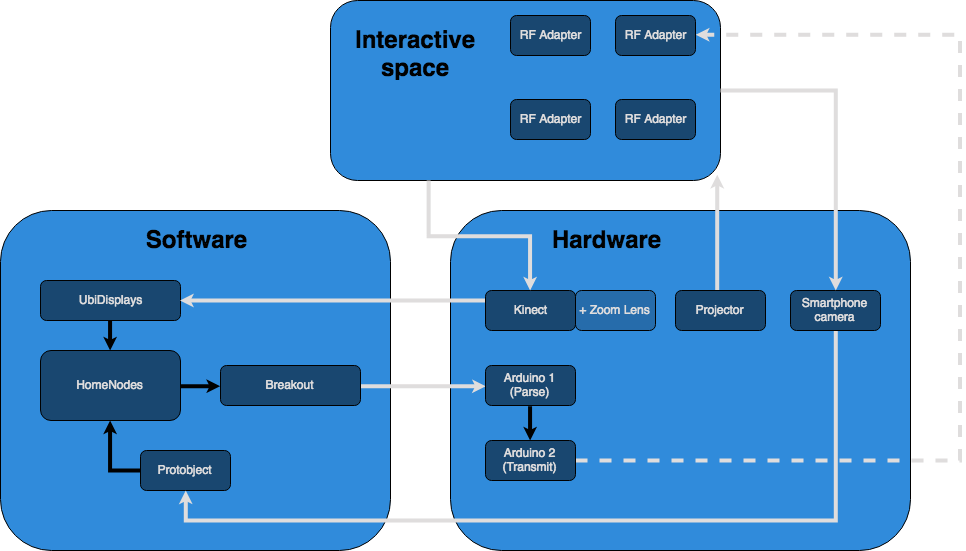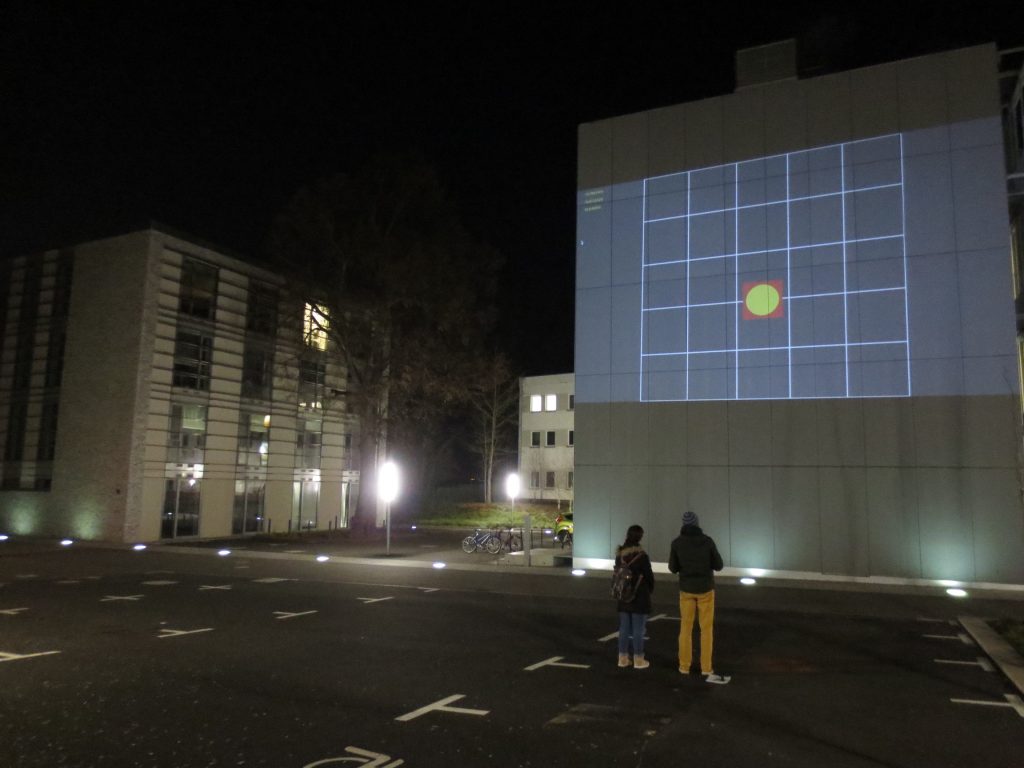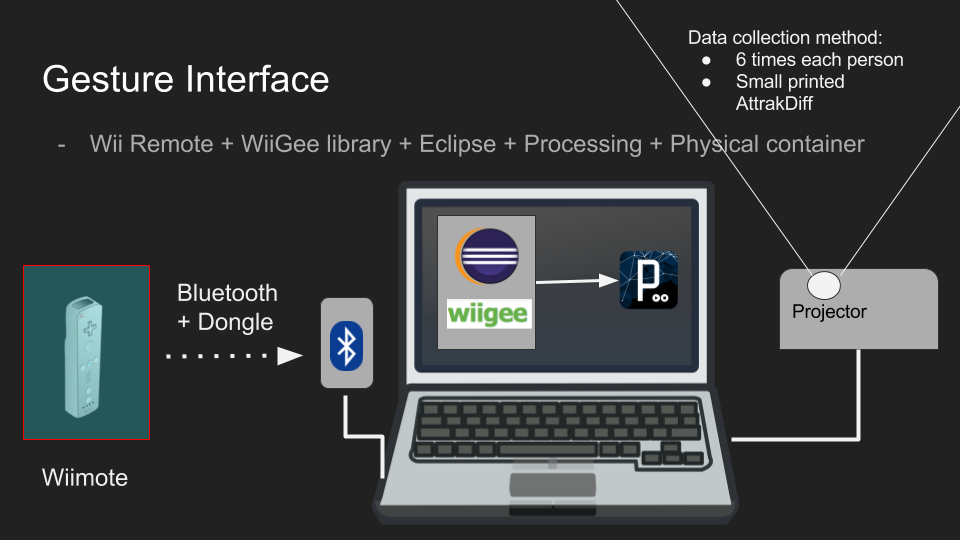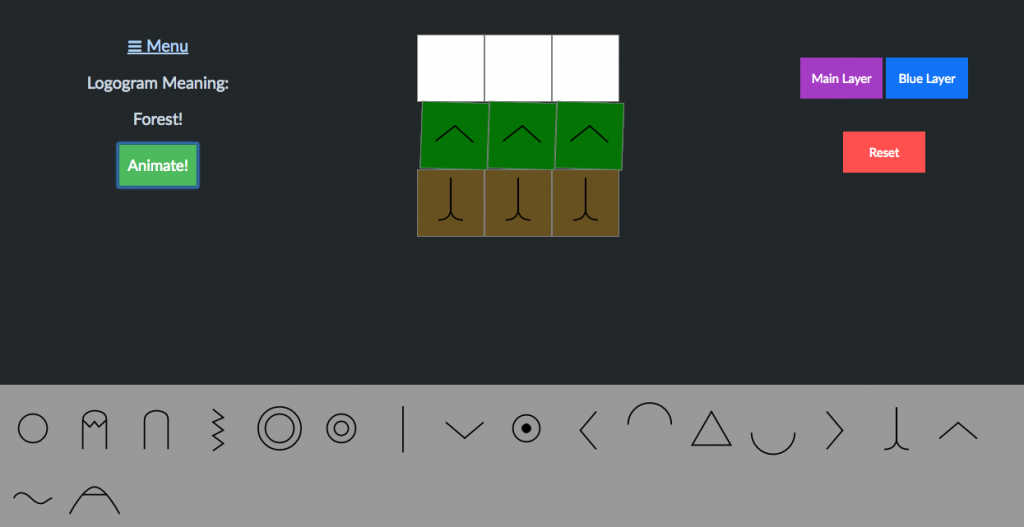IoT Design – Masters Thesis
My Master’s thesis involved the creation of an Internet of Things interface, which I entitled “HomeNodes”. The HomeNodes interface was projected on to to objects. Users could connect objects together using a touch enabled wall interface and by tapping their smartphone on different objects.
The following is a short summary of my project:
- Conduct low-fidelity prototyping sessions with users to explore the IoT design space.
- Research existing interactive systems
- Construct a prototype
- Test with users and use observation and video analysis
- Build a list of topics from this analysis that outlines the important design considerations and feedback for my IoT interface.
Video of the system in action:
The following images are version 1 and 2 of my systems. The green elements in the second image are technologies that I added to make the system more scalable. The thesis can be read and downloaded in full at this link. The code will be available on my GitHub.







